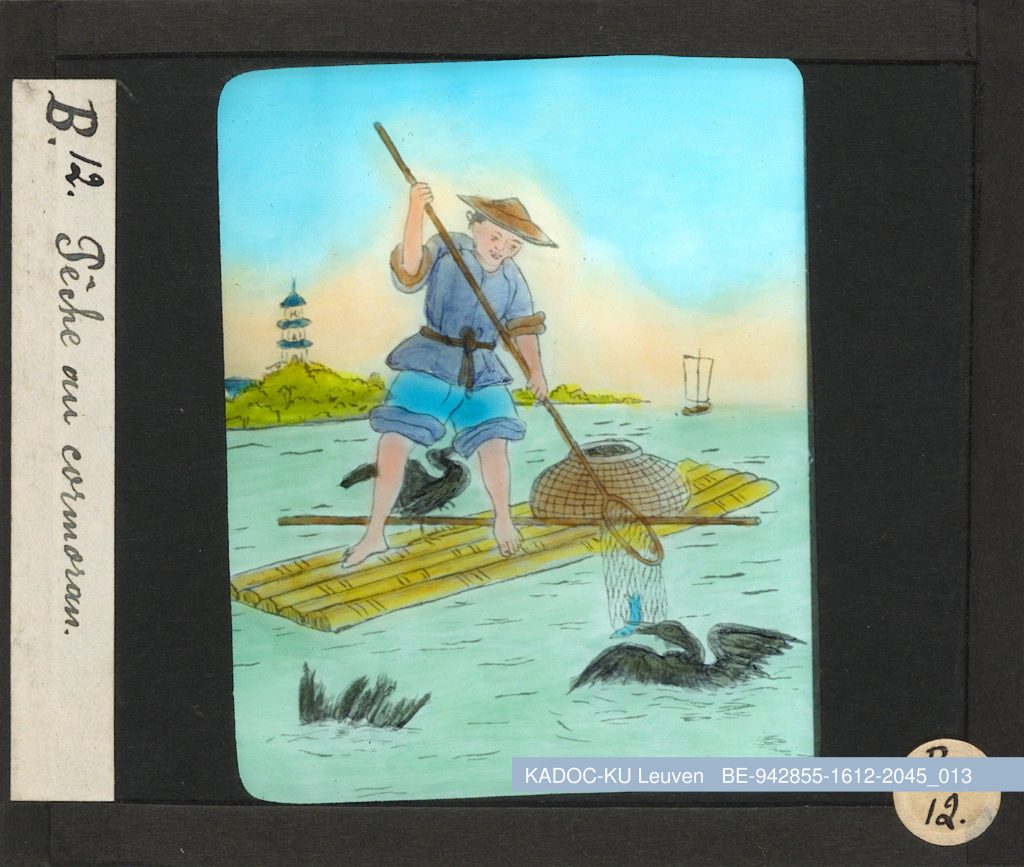img. glass positive illustration from the collection of photoreportages by Piatus Dionysius Wantz – KADOC-KU Leuven, Belgium – CC BY-SA via Europeana.
KADOC is the interfaculty Documentation and Research Centre on Religion, Culture and Society at KU Leuven. Established in 1976, KADOC is an international centre for the study of the interaction between religion, culture and society in the nineteenth and twentieth centuries. It preserves and discloses an extensive archival collection and heritage library that emerged from the interplay between religion, culture and society in a Belgian, European and global context. Political and social developments such as the welfare state, civil society, democratization, European integration, and secularization are documented in the collections of political movements, trade unions, NGOs, and religious congregations. Its ‘international’ collections document a wide range of interactions between Europe and the Americas, Asia and Africa as intermediated by political movements, churches, NGOs and individual actors. KADOC stimulates international research by organizing conferences, maintaining relations with European universities and partner institutions, by publishing innovative studies, and by hosting junior and senior researchers from across the world.
Amongst the international collections preserved by KADOC, the material pertaining to China stands out for its diversity and its relation to major historical events. Particularly the archives and libraries of missionary congregations active in various regions in China offer a rich insight into the interaction between China and the West over the course of the long nineteenth and early twentieth centuries. Both published and unpublished sources (e.g. schoolbooks, catechisms and correspondences) show how Belgian missionaries, predominantly Scheutists, Franciscans and Jesuits, manifested themselves culturally (e.g. education and catechesis) and physically (e.g. architecture and clothing). Yet, while striving to increase their influence on local communities, missionaries also extensively documented their environment, either through ethnographic observations or through the medium of photography, thereby transmitting a unique panorama of local religious traditions, industries and cultural expressions. A gripping illustration of this documentary zeal is the extensive glass plate collection of the Belgo-Luxembourgian Dionysius Piatus Wantz (1884-1986), a Franciscan missionary who worked in the region of today’s Hubei province from 1904 until 1933. Missionary archives and photographic collections reveal unique information about some major historical events that missionaries were witnesses to. A photo album preserved in the Archive of the North-Belgian Jesuit Province, for example, shows the construction of the Jinghan railway between Beijing and Hankou (Wuhan) between 1899-1902. A photo-album dedicated to the Boxer Rebellion and to the memory of its victims, preserved in the Scheutist archives, offers an unexpected perspective on China’s impactful anti-imperialist resurrection between 1899 and 1901.
KADOC is committed to disclosing and harnessing both analogue and born digital heritage through the online publication of content and metadata. Much emphasis is placed on to the contextualisation and linking of data, in accordance with international standards, preferably as open data and allowing full-text search. KADOC collects born-digital heritage in cooperation with archive creators and commits to digitising analogue collections, either at the request of readers, systematically or project-based. It invests in LIAS, a digital ecosystem for the management, preservation, and provision of digital sources. KADOC publishes its heritage through its own catalogues and through platforms and consortia such as Europeana and Wikidata. It also curates thematic collections and online exhibitions through its own web platform www.kadocheritage.be and its Dutch counterpart www.kadocerfgoed.be. In this way, KADOC aims to bridge the gap between specialists and a wider audience. To ensure that its collection reflects social and technological evolutions, KADOC keeps a finger on the pulse of access trends, invests in incorporating new media, and integrates new technologies in its work processes.
PAGODE – Europeana China is co-financed by the Connecting Europe Facility Programme of the European Union, under GA n. INEA/CEF/ICT/A2019/1931839

